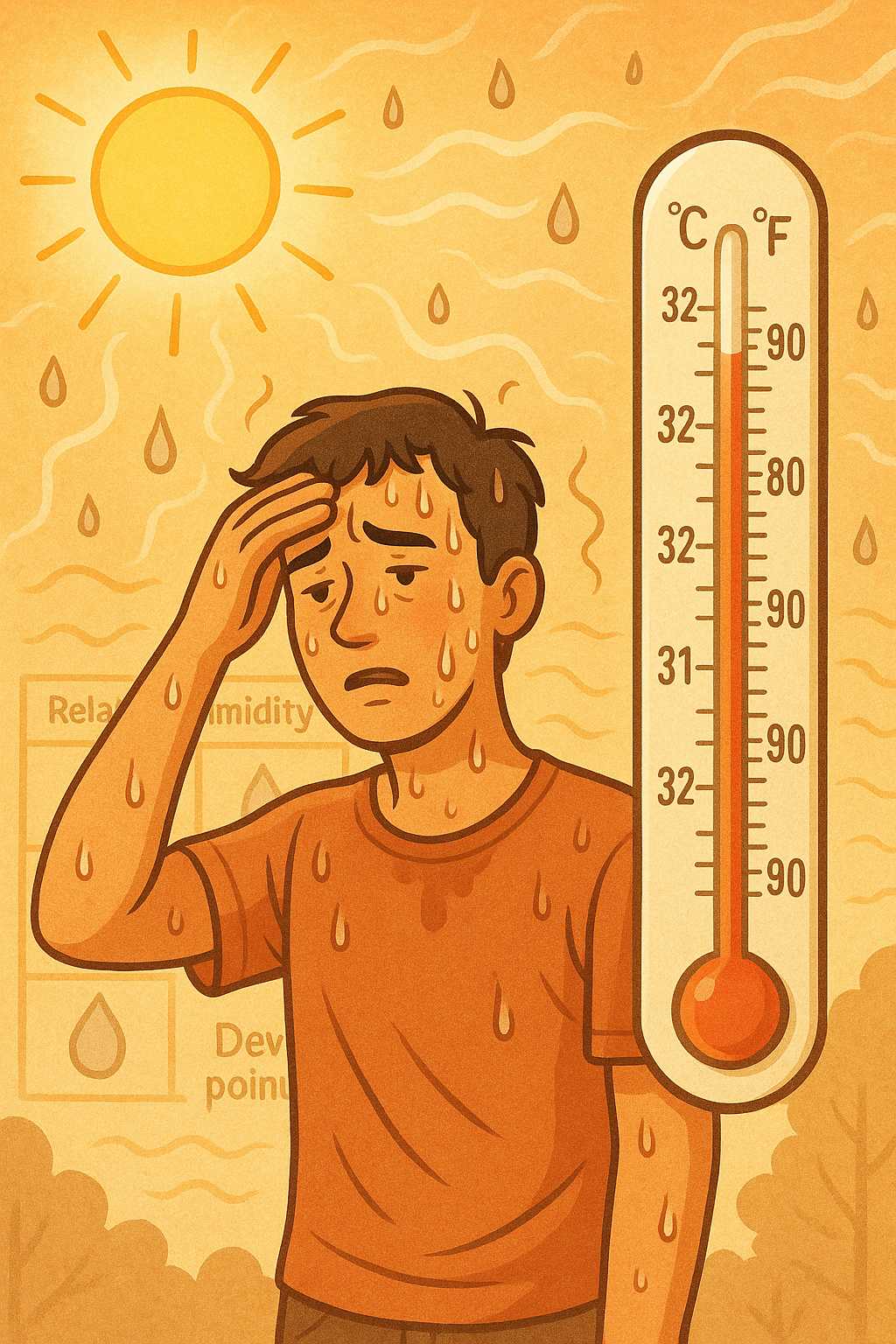As a meteorologist, I’m often asked why hot, humid summer days can feel so much more uncomfortable than dry heat—even at the same temperature. The answer lies in the interplay between our bodies, the atmosphere, and the physics of water vapor.
A Quick Refresher: What Is Humidity?
Humidity is simply the amount of water vapor in the air. Meteorologists measure it in two main ways: relative humidity (the percentage of moisture in the air compared to what the air can hold at a certain temperature) and dew point (the temperature at which air becomes saturated with moisture).
How Our Bodies Stay Cool
Our bodies rely on evaporative cooling to regulate temperature. When we overheat, we sweat, and as sweat evaporates from our skin, it removes heat, cooling us down. The catch? Evaporation only works efficiently if the surrounding air isn’t already saturated with water vapor.
Why It Feels Worse When It’s Humid
On a humid day, the air is already laden with water vapor. This slows down the evaporation of sweat from our skin, making it much harder for our bodies to shed excess heat. As a result, we feel stickier, hotter, and more uncomfortable than we would at the same air temperature with low humidity.
For example, a 32°C (90°F) day with 30% relative humidity feels far less oppressive than the same temperature with 70% humidity. That’s why the "heat index" provides a more accurate picture of how hot it really feels, factoring both temperature and humidity.
The Role of Dew Point
Dew point is a favorite metric among meteorologists because it gives a direct sense of moisture in the air. When dew point rises above 18°C (65°F), most people start feeling muggy. A dew point above 24°C (75°F) signals very oppressive conditions.
Conclusion: It’s Not Just the Heat, It’s the Humidity
Next time a sticky summer day leaves you longing for air conditioning, remember: you’re experiencing the science of water vapor firsthand. Humidity isn’t just a comfort issue—it’s a direct result of how our bodies interact with the atmosphere, a classic example of meteorology at work. Stay hydrated, seek shade, and keep an eye on both the temperature and humidity to better understand what you—and your body—are up against.


Leave a Reply